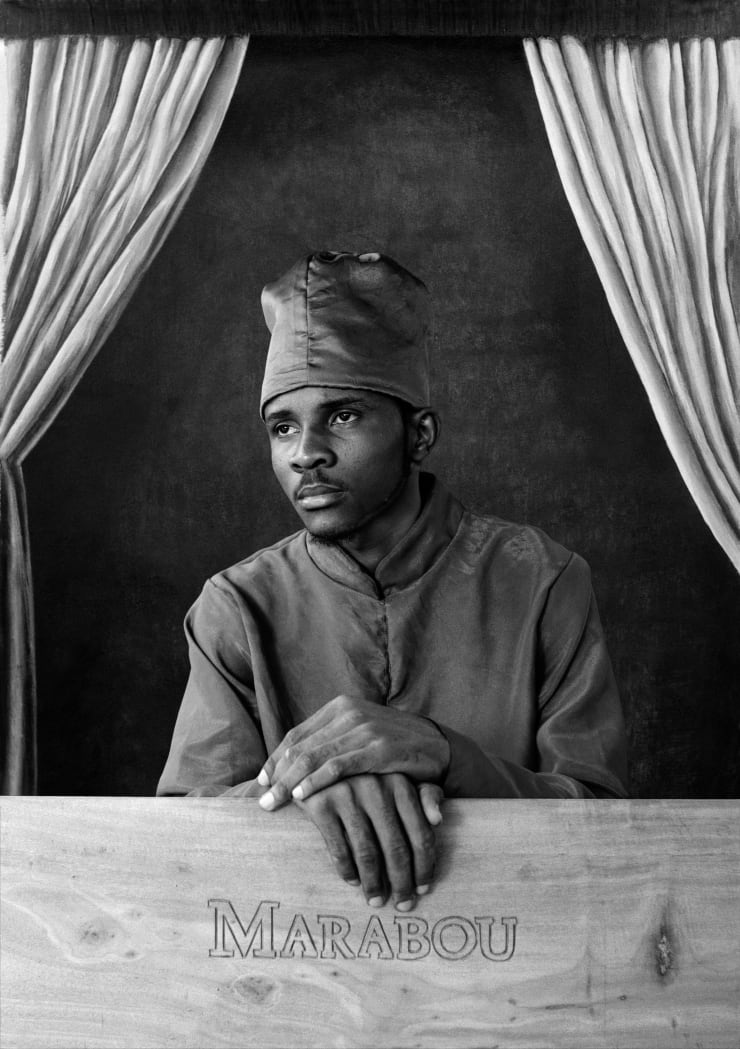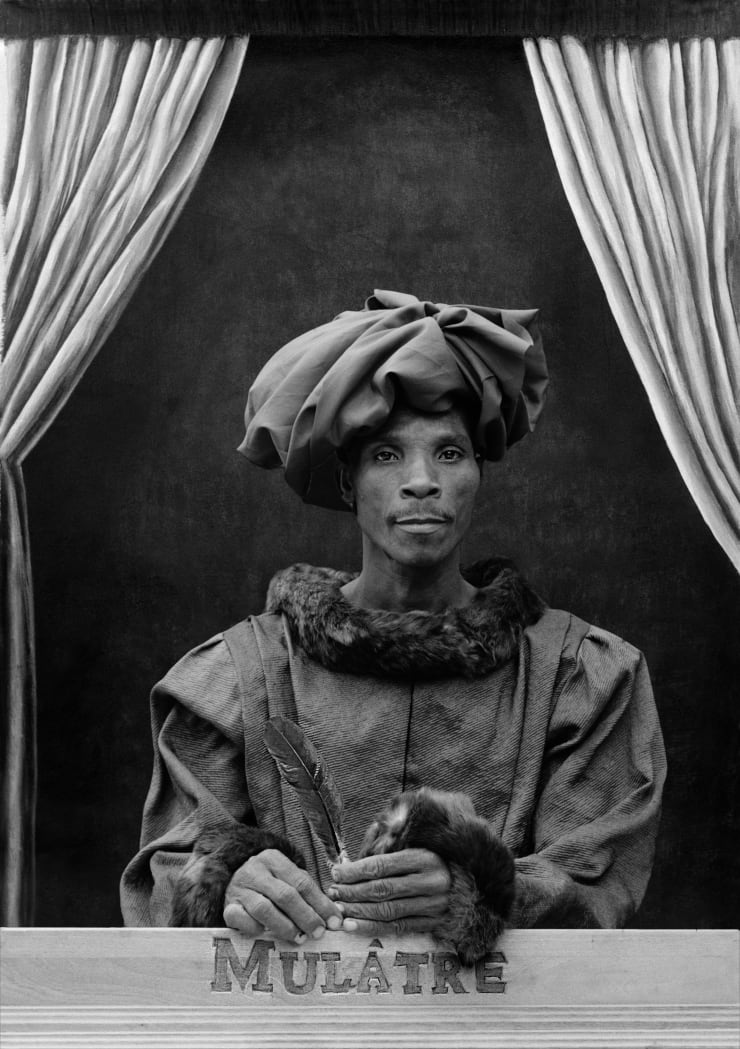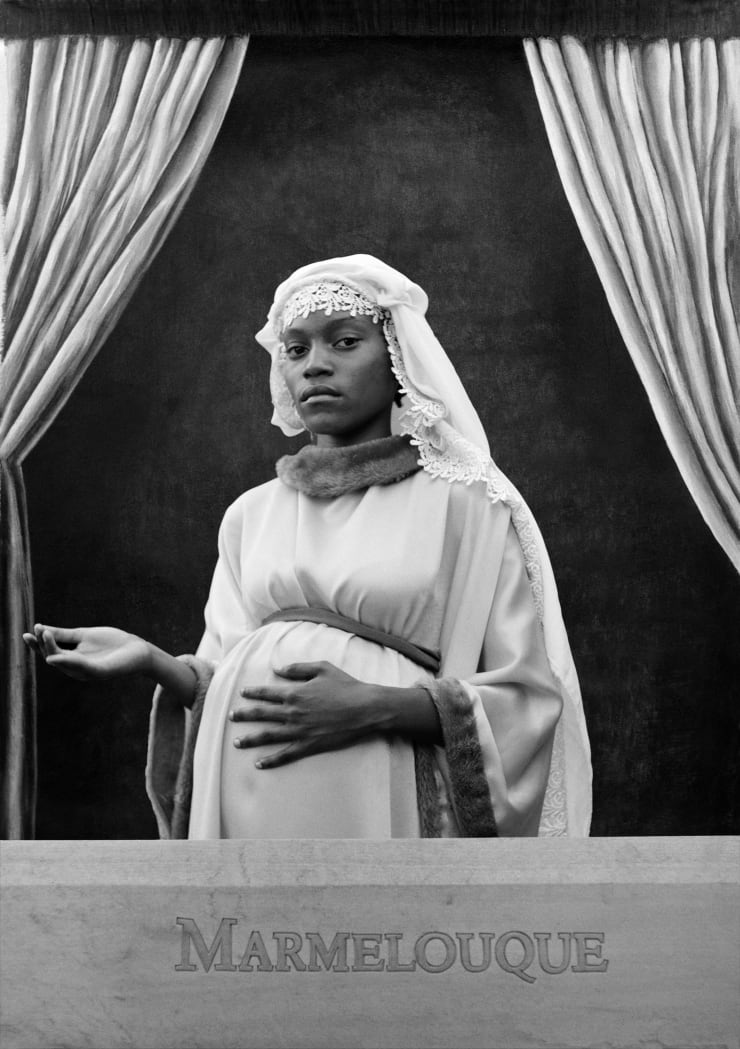At documenta fifteen, Leah Gordon presents The Caste Portraits, part of her curatorial project with Atis Rezistans (Resistance Artists).
A shifting community of Haitian majority-class artists, including Gordon’s partner André Eugène, Evel Romain, Katelyne Alexis and Claude Saintilus. Atis Rezistans are based in Port au Prince’s Grand Rue area where they have hosted the art festival Ghetto Biennale since its launch in 2009. Invited to particpate in documenta fifteen in Kassell, Germany, Atis Resistanz’s work is curated by Gordon and exhibited in a decommissoned church.
* * * *
Gordon’s Caste Portraits investigate the practice of the grading from black to white of skin colour, which marked the extent of racial mixing in 18th century colonial Haiti. Moreau de St Mery, a French colonialist living in Haiti, created a surreal taxonomy of race which classified skin colour from black to white using names borrowed from mythology, natural history and bestial miscegenation.
Each name corresponds with a percentage of the fusion of black and white blood. As Colin Dayan, a Haitian historian, comments, “Stranger than any supernatural fiction, the radical irrationality of Moreau St Mery’s methods demonstrates to what lengths the imagination can go if driven by racial prejudice.”
Gordon’s Caste Portraits depict the nine skin varieties, with herself at one end of the scale as ‘Blanche’, and her partner, Andre Eugene, a Haitian sculptor, at the other end of the racial spectrum as ‘Noir’. By placing herself in the series, Gordon was questioning her own relationship and culpability with Haiti’s history.
At documenta, the portraits sit alongside a prophetic photographic reconstruction of William Blake’s illustration of ‘Europe Supported by Africa and the Americas’. The image comes from Stedman's Surinam: Life in an Eighteenth-Century Slave Society, a book widely used by British abolitionists. Featuring a decrepit Europe, the reconstruction functions as a stark look at a future where the old economic power balances could shift and change as reparations are demanded.









